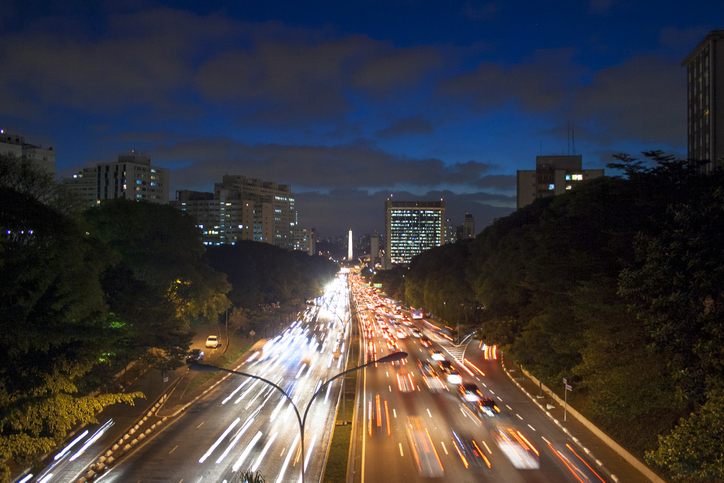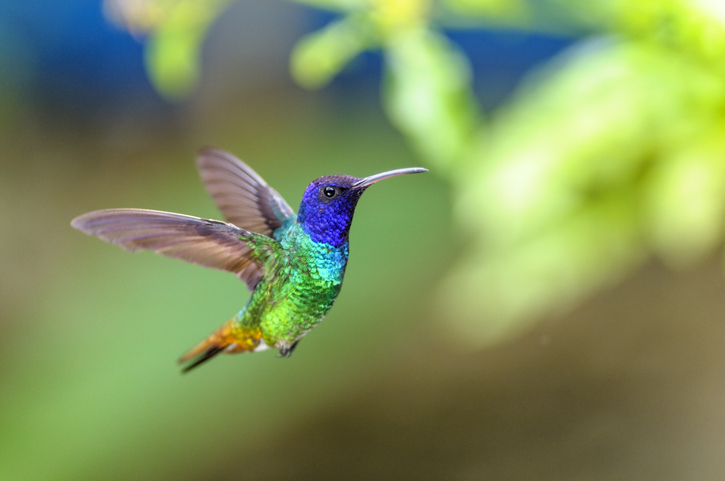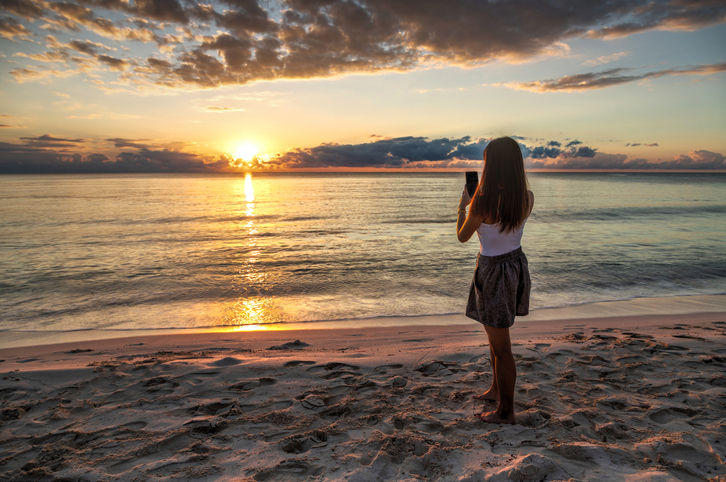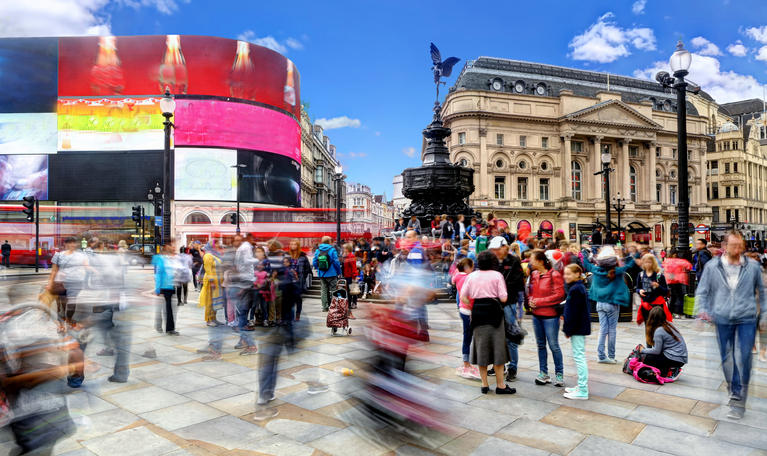How To Do Shutter Speed On Iphone 11
Reading Time: 8 minutes read
In photography, shutter speed has a significant impact on your photos. Understanding shutter speed opens up a world of creativity. It allows a photographer to look with fresh eyes at light and dark, movement and stillness, and varying styles and compositions within a single image.
What is Shutter Speed?
Shutter speed is the length of time the camera shutter is open to expose light onto the camera sensor. It's how long your camera takes to snap a photo. The faster the shutter speed, the shorter the time the image sensor is exposed to light. The slower the shutter speed, the longer the time the image sensor is exposed to light.
Shutter speed is responsible for changing photos' brightness and creating dramatic effects by freezing or blurring motion. The camera's shutter is the "curtain" in front of the camera sensor that stays closed until the camera fires. When the camera fires, the shutter opens and fully exposes the camera sensor to the light that passes through the lens. After the sensor collects the light, the shutter closes immediately.
Shutter speed is a measurement of the time the shutter is open, shown in seconds or fractions of a second: 1 s, 1/2 s, 1/4 s …1/250 s, 1/500 s, and so on. For example, 1/4 s means a quarter of a second, while 1/250 means one-two-hundred-and-fiftieth of a second (or four milliseconds).

Slow Shutter Speed
Slow shutter speed means that the shutter speed is set to 1 second or longer. It helps create movement or "blur" within images. Slow shutter speeds are used to photograph objects at night or in dim environments with a tripod.
Landscape photographers use slow shutter speeds to create a sense of motion with water, such as with rivers or waterfalls, to keep the frame around the composition crisp in contrast.

Fast Shutter Speed
Fast shutter speed does the opposite: The shutter's speed is fast enough to "freeze" action. Typically, fast shutter speed is around 1/500 or higher. Motions are eliminated from fast-moving objects with fast shutter speeds, like birds in flight or cars driving down a road.
When using fast shutter speed while taking pictures of spraying water, visible droplets hang in the air that might not be visible to the naked eye.

Aperture, ISO, and Shutter Speed
An iPhone's aperture and ISO affects the brightness of photos. Aperture is the opening in a lens where light passes to enter the camera. Think of aperture as the "pupil" of the camera's eye. In photography, the aperture size can shrink or grow to allow more or less light to reach the camera sensor. The larger the opening, the more light passes to the camera sensor.
Aperture also controls the depth of field. If the aperture is tiny, the depth of field is large. Alternatively, if the aperture is large, the depth of field is small. Aperture is expressed in "f" numbers." The f-number is the ratio of the lens's diameter aperture to the length of the lens. Each number either doubles or halves the amount of light allowed through the lens. Examples of f-numbers are f/1.4, f/2.0, f/2.8, f/4.0, f/5.6, f/8.0.
ISO is a way to brighten photos if a longer shutter speed or a wider aperture isn't available. ISO is measured in numbers recognized as 100, 200, 400, 800, 1600, etc. A lower number represents a darker image, and higher numbers mean a brighter image. However, the higher the ISO, the grainier the image.
"F-stop" and Shutter Speed
Increments between ISO numbers are called "a full stop" or "f stop" of light. For example, there's one full stop between ISO 100 and ISO 200, while there are two full stops between ISO 100 and ISO 400.
It is easy to remember full stops between shutter speeds because you just start from one and divide the number by two: 1, 1/2, 1/4, 1/8, 1/15, 1/30, 1/60, 1/125, etc.
Shutter Speed for Portraits
Finding the right shutter speed for iPhone photography portraits takes practice to find the right balance of the ISO, aperture, and shutter speed. Adjust one, and you'll have to compensate by adjusting one of the other factors.
Ensure the shutter speed is fast enough to eliminate camera shake if holding the camera by hand and subject movement if using a tripod. Again, making adjustments to these elements will only help your knowledge of them. Your command of them will show in your end results.

Long Exposure on iPhone
Before learning about using your iPhone for long exposure shots, firstly let's discover what a long exposure shot photo is. These particular photos use a technique that makes the most of slower shutter speeds to result in eye-catching and unique photos. This type of photography is popular among landscape and street photographers.
But you don't necessarily need a professional camera, you can use your iPhone to create long exposure photos.
Use long-exposure to create deliberate blur and interesting light trails in photos, such as moving cars in a cityscape photo. Long exposure shots require a slow shutter speed. Shutter speed adjustment isn't available on the iPhone.
However, there are alternative ways to achieve light trails with an iPhone, either with a long exposure photography app or by converting Live Photos into long exposure shots. A long-exposure photo requires a moving subject and an iPhone tripod or a sturdy surface to set the camera.
Practice long exposure shots around the house by capturing moving objects like running water or a frying egg.
If you have an iPhone 11, you can enjoy the shutter speed feature too! From using a slow shutter speed for breathtaking, long exposure photos to adjusting your shutter speed, there are plenty of ways for you to get creative with this function using your iPhone 11. Read some of our tips and tricks to get inspired
How to take a long exposure shot with an iPhone:
- Open the Camera app and turn on Live Photos (the icon with concentric circles at the screen's top right).
- Tap the up arrow button at the top/middle of the screen so that it faces down. A set of icons will appear at the bottom of the screen.
- Tap the self-timer button (the clock-shaped icon on the very right) for either 3 or 10 seconds. Using the self-timer for long exposure shots reduces camera shake.
- Hold the iPhone steady or position it on a tripod to minimize shake and frame your shot.
- Tap the shutter button to take a Live Photo.
- Tap the photo just taken in the bottom left corner, or open the Photos app and find the photo.
- Swipe up on it to reveal Effects.
- Swipe left until you see the "Long Exposure" effect. Tap it to create a long exposure photo.
How to Change Shutter Speed on an iPhone
The iPhone camera does not come with a manual shutter speed option like aperture does. However, the shutter speed and ISO can be slightly adjusted to change the exposure of a photo. Here's how:
- Open the Camera app
- Tap the screen to set focus, and a vertical yellow line with a yellow sun icon on the right of the focus box will appear.
- Swipe the sun icon up to increase the exposure, or swipe it down to decrease the exposure. The image on the screen will either lighten or darken immediately. Tapping elsewhere on the screen will reset the exposure to automatic values. The camera will apply a suitable shutter speed and ISO setting to get the exposure you want.
Download third-party apps to adjust an iPhone camera's shutter speed and control the values of aperture and ISO. These apps offer semi-automatic modes for beginners. For example, set the shutter speed manually, and the app will adjust the ISO accordingly to achieve the correct exposure.
Or, set the ISO manually, and the app adjusts the shutter speed accordingly. There's also a full manual mode to modify both parameters, to truly experiment with shutter speed, aperture, and ISO.
From fast shutter speed to long exposure, like any new photography style, practice often makes perfect With experimentation, in no time at all, you'll be taking photos you never imagined you'd be able to but always wanted to. Also, do those amazing photos some justice by preventing them from being lost amongst all the rest.
Want to learn more? Check out our quickfire FAQs!
How do you change the shutter speed on iPhone 11?
Is the process the same as any other phone? Pretty much! You'll need to speed up or slow down the shutter speed, you just need to edit it through your external shutter speed app.
How do you do long exposure on iPhone?
For photos with an artistic and creative touch, simply take a photo using the live function on the photos app. Then swipe up to see the available effects, scroll and select long exposure to edit your photo directly.
How to make the shutter speed faster?
To speed up your shutter speed simply open your preferred camera app, select shutter speed and use the slider to adjust to the speed that you want.
Feature your best in a high-quality canvas, photo book, calendar, or card. Motif makes it easy to display your photography talents.
What did you think of this article?
- Author
- Recent Posts
![]()
A natural born storyteller based in NYC and the Catskills. Pairing stories with photos for safe keeping and telling.
![]()
How To Do Shutter Speed On Iphone 11
Source: https://www.blog.motifphotos.com/understanding-iphone-shutter-speed-and-how-it-impacts-your-photos/
Posted by: baumgardnerruty1945.blogspot.com

0 Response to "How To Do Shutter Speed On Iphone 11"
Post a Comment